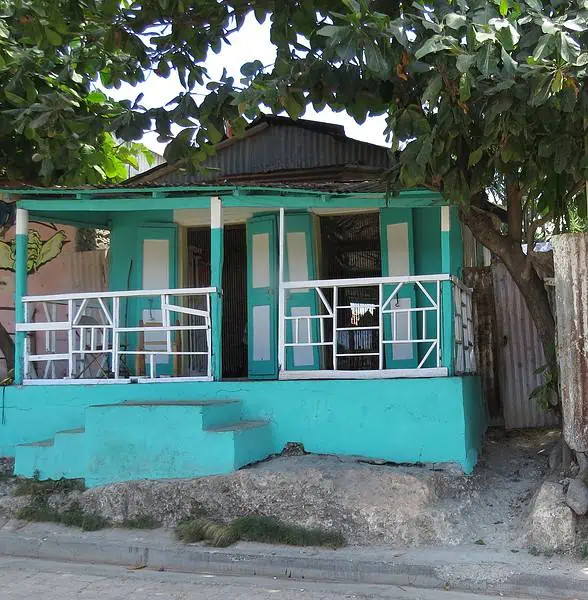Haiti, a Caribbean nation on the island of Hispaniola, boasts an illustrious cultural heritage manifested in its distinctive architectural style.
Despite confronting numerous obstacles, such as natural calamities and political strife, the legacy of architecture in Haiti has remained resilient due to the efforts of preservationists and architects dedicated to it.
In this piece, we shall explore the captivating realm of Haitian architecture and its struggle to maintain its distinct features.
Haitian architecture uniquely blends colonial and local influences, emphasizing natural materials like wood and clay.
Gingerbread House
The most famous example is the ‘gingerbread house,’ built in the late nineteenth century and features ornate fretwork – or latticework – on its exterior with bright colors such as gingerbread moldings.
These houses are mostly located in Port-au-Turgeau Prince’s city’s District (Turgueu) and Pacot District (Pacot) (Pacotte).
Architecture in Haiti iconic structures
One of Haiti’s most iconic structures is the awe-inspiring Citadelle Laferrire, located atop a mountain in Cap-Haïtien and constructed during the early 19th century by Henri Christophe, one of Haiti’s revolutionary leaders and independence icons. Citadelle is one of famous Haiti Historical Sites.

This colossal fortress has been recognized as a UNESCO World Heritage Site since 1981 and is an essential sightseeing destination for anyone interested in Haitian history or architecture.
Haiti boasts a bevy of opulent memorials, including the Sans-Souci Palace in Cap-Hatien. It was constructed during the late 18th century by Henri Christophe, who was adored as King Henri I.
It embodied the flamboyant gingerbread architecture style and was once home to Haiti’s monarch. However, efforts are underway today to bring it back to its former glory!
2010 Earthquake Struck Haiti
Unfortunately, natural disasters have impacted Haiti’s architectural heritage. The 2010 earthquake caused significant destruction to many buildings in Port-au-Prince and other areas, such as the Presidential Palace.
This catastrophe decimated forty percent of the city’s structures, leaving hundreds of thousands homeless and without access to essential services.
Despite these challenges, Haitian architects and conservationists are diligently working towards rebuilding their native architecture so it can one day be restored with vitality.
Effort to Safeguard Haitian Architecture
FOKAL, an organization committed to safeguarding Haitian architecture, is spearheading several initiatives to restore sites of historical significance and cultivate interest in Haitian gingerbread architecture for tourism.
One such endeavor has been restoring historic structures, especially Hotel Oloffson, which was added to the World Monuments Watch List as an exemplary example of this type.
The heritage of Haiti’s architectural splendor is an essential aspect of its cultural inheritance, and safeguarding it is vital to the interests of the Haitian populace.
By undertaking restoration projects and fostering tourism-related initiatives that showcase Haitian architecture as a spectacle, Haiti can continue to exhibit its singularly exquisite cultural legacy before international eyes while also assuring that these precious antiquities endure into future generations.
It necessitates concerted efforts by architects, conservationists, and locals for this country’s renowned architectural treasures to survive and flourish for all time!
One of Haiti’s primary obstacles to preserving its architectural legacy is its tropical environment’s extreme heat and humidity.
This can be especially difficult for structures that have been exposed to these conditions for many years and require regular maintenance to survive and remain structurally viable – an especially important factor given Haiti’s turbulent history with economic and political instability.
Despite these difficulties, Haitians have continued to preserve their distinct architectural legacy. For instance, Jacmel is renowned as a haven for its dazzling gingerbread abodes.

It has become a magnet for Architecture in Haiti and artisanal talents who specialize in reviving and revitalizing these historical constructions.
Organizations like FOKAL and the Haitian National Trust have also been instrumental in educating people about the importance of safeguarding Haiti’s rich architectural landscape; through advocacy and education.
Architecture in Haiti, a composite of colonial and native sensibilities, embodies the nation’s remarkable cultural past.
From its iconic gingerbread abodes in Port-au-Prince to the awe-inspiring Citadelle Laferrire – Haiti’s architectural legacy is an enduring testament to its people’s tenacity and ingenuity.
Despite the perils of natural calamities, political instability, and economic hardships, architects, conservationists, and Haitians continue to collaborate to preserve and rejuvenate Haiti’s unique cultural heritage.
For Haitian architecture to remain a lucrative tourist attraction and ensure its longevity, ongoing efforts are being made towards restoring it through initiatives such as creating an architectural tourism destination.



